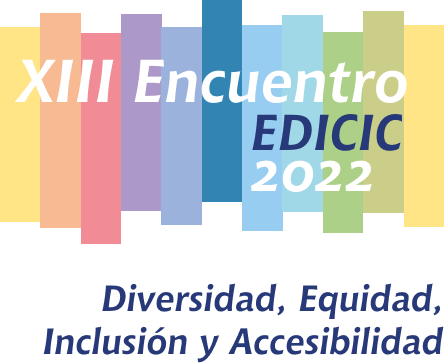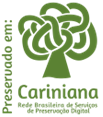El aporte de las plataformas digitales de aprendizaje a la docencia de pregrado
DOI:
https://doi.org/10.62758/re.v2i2.183Palabras clave:
Plataformas Digitales, Plataformas Digitales Educativas, Recursos de Información Digitales, Enseñanza-AprendizajeResumen
Este estudio aborda el fenómeno de las Plataformas Digitales que en la actualidad está más presente en esta sigla, sin embargo, se debe al avance tecnológico provocado por las Revoluciones Industriales que detonaron cambios innovadores como la automatización de procesos, el conocimiento técnico-científico, los ciberfísicos de sistemas, sistemas en la red computadoras, big data, computación en la nube, inteligencia artificial, robótica, entre otros inventos. Así, las plataformas digitales actuán cómo facilitadores en línea en el proceso de comunicación entre entidades y personas, agregando valor a la prestación de servicios y productos. Este escenario de transformación digital, basado en uno de los grandes inventos del siglo XX, internet, revoluciona las formas de relación a escala global y la información adquiere un nuevo protagonismo, pasando de lo individual a lo patrimonial. Hay quienes consideran que las plataformas digitales son anfitriones de información para que la relación se haga posible, sin importar la distancia, el tiempo, el volumen de datos, el idioma o el tipo de contenido. Cabe señalar que en 2020 el mundo se vio sorprendido por la aparición del nuevo coronavirus SARS-COV-2, enfermedad denominada COVID-19 y que por su gravedad en el proceso de contaminación, el Ministerio de Salud propuso el distanciamiento social en todos demandas de trabajo, entretenimiento, viajes y educación, con permiso solo para servicios de emergencia y con todas las normas necesarias de garantía de salud. El área educativa tuvo que realizar rápidos cambios y actualizaciones en sus procedimientos, contenidos y estrategias de plan de lecciones para causar el menor daño posible en el desempeño de los estudiantes. Como resultado, las plataformas digitales se han convertido en recursos esenciales. Por lo tanto, al considerar estas preguntas, vale la pena reflexionar: ¿en qué medida las plataformas digitales como recurso tecnológico cooperan para el proceso de aprendizaje? Así, el objetivo de este estudio es comprender la contribución de las plataformas digitales al proceso de enseñanza y aprendizaje en los cursos de pregrado. Los procedimientos metodológicos aplicados son de carácter cualitativo; tipo de investigación descriptivo-exploratoria, a partir del levantamiento bibliográfico de libros, artículos y tesis investigados en bases de datos del área de Ciencias de la Información. Autores como Bisol (2010); Parker, Alstyne y Choudary (2018); Miskulin (2021); Schmidt (2017); Rockembach (2013) y Martín-Gutiérrez, et al. (2014) sustentan la fundamentación teórica del estudio. Los resultados demuestran el desafío que enfrentan los educadores al momento de utilizar recursos tecnológicos que exigen una constante actualización de los sistemas, preparación pedagógica de los docentes e infraestructura adecuada. Las plataformas actúan como mediadores y facilitadores en las prácticas académicas, contribuyendo a la mejora de los materiales, trabajos de investigación, además de promover la interacción entre las personas, despertando mayor interés por la variedad de estímulos para el aprendizaje.
Palabras llave: Plataformas Digitales; Plataformas Digitales Educativas; Recursos de información digitales. Enseñanza-Aprendizaje.
Citas
Associação Brasileira de Educação a Distância. CENSO EAD 2019-2020. (2022). Relatório Analítico da Aprendizagem a Distância no Brasil. https://abed.org.br/arquivos/CENSO_EAD_2019_PORTUGUES.pdf.
Baldwuin, C. Y.; Woodard, C. J. The Architecture of Platforms: A Unified View. (2009). Platforms, Markets and Innovation. 19-44. Research Collection School Of Computing and Information Systems. https://ink.library.smu.edu.sg/sis_research/2452/ DOI: https://doi.org/10.4337/9781849803311.00008
Bisol, C. A. (2010) Ciberespaço: terceiro elemento na relação ensinante/ aprendente. In: Valentini, C. B.; Soares, E. M. S. (Org.). Aprendizagem e Ambientes Virtuais: compartilhando ideias construindo cenários. Caxias do Sul: Educs.
Castells, M. (2003). A Galáxia da internet: refle-xões sobre a internet, os negócios e a sociedade. Rio de Janeiro, Ed. Paz e Terra.
Datareportal. (2022). Internet use in Brazil. https://datareportal.com/digital-in-brazil
http://modares.ac.ir/uploads/Edu.Plexprvmng.News.970417.2.pdf
https://www.brapci.inf.br/_repositorio/2015/12/pdf_a9c97a9a67_0000018247.pdf
https://www.scielo.br/j/cebape/a/8VsR3wSrH9f4wHjwJhXb3Hx/abstract/?lang=en
Kenski, V. M. (1998). Novas tecnologias: o redimensionamento do espaço e do tempo e os impactos no trabalho docente. Revista Brasileira de Educação, Rio de Janeiro, n.8, p.58-71, 1998. http://educa.fcc.org.br/pdf/rbedu/n08/n08a06.pdf
Martín-Gutiérrez, J., et al. (2014). Augmented reality to promote collaborative and autonomous learning in higher education. Elsevier, pp. 752-761. DOI: https://doi.org/10.1016/j.chb.2014.11.093
Miskulin, A. P. S. C. (2021). Aplicativos e Direito do Trabalho: a era dos dados controlados por algorítmos. São Paulo: Editora JusPodivm.
Moran, J. M. et al. (2000). Novas tecnologias e mediação pedagógica. 6. ed. Campinas: Papirus.
Prensky, M. (2001). Aprendizagem baseada em jogos digitais. São Paulo: Senac.
Rockembach, M. (2013). Evidências da Informação em plataformas digitais: uma reflexão teórica à construção de um modelo. Informação arquivística. Rio de Janeiro, v.2. n.1, pp. 89-109. DOI: https://doi.org/10.18377/2316-7300/informacaoarquivistica.v2n1p89-109
Schmidt, F. A. (2017). Digital Labour Markets in the Platform Economy. Good Society – Social Democracy.Parker, G. G., Alstyne, M. W. V., Choudary, S. P. (2018). Plataforma a revolução da estratégia: o que é a plataforma de negócios, como surgiu e como transforma a economia em alta velocidade. Alta Books.
Swiatkiewicz, O. (2014). Soft, hard or moral skills: anexploratory study on the workers skills thar organization in Portugal appreciate most. Cadernos EBAPE, Escola Brasielria de Administração Pública e de Empresas Rio de Janeiro, v. 12, n. 3, pp. 663-687, jul-set.
Tori, R. (2003). Tecnologias interativas na redução de distância em educação: taxonomia da mídia e linguagem de modelagem. (Tese Livre docência). – Escola Politécnica da Universidade de São Paulo. Departamento de Engenharia de Computação e Sistemas Digitais. https://www.teses.usp.br/teses/disponiveis/livredocencia/3/tde-08072022-082125/publico//RomeroToriLD.pdf
Tori, R. (2014). A presença das metodologias interativas na educação. Revista de Computação e Tecnologia da PUC-SP. Departamento de Computação/FCET/PUC-SP, Vol. II, No.14. https://revistas.pucsp.br/index.php/ReCET/article/view/3850/2514.
Descargas
Publicado
Cómo citar
Número
Sección
Licencia
Derechos de autor 2022 Revista EDICIC

Esta obra está bajo una licencia internacional Creative Commons Atribución 4.0.
La Asociación posee los derechos de autor de los textos que publica y adopta la licencia Creative Commons, CC BY 4.0 DEED Atribución 4.0 Internacional (https://creativecommons.org/
Usted es libre de:
- Compartir: copiar y redistribuir el material en cualquier medio o formato para cualquier propósito, incluso comercialmente.
- Adaptar: remezclar, transformar y construir a partir del material para cualquier propósito, incluso comercialmente.






